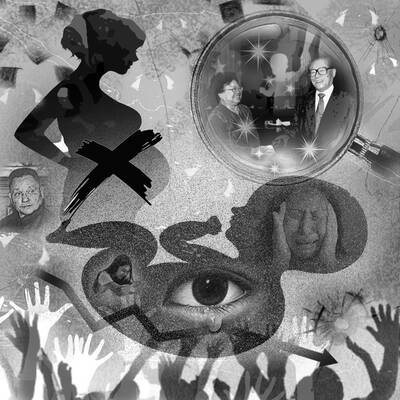Climate change and environmental protection have become issues of great concern to governments around the world. In line with this trend, most New Southbound Policy partners, including ASEAN nations and India, are working hard to promote the electric vehicle (EV) industry, establishing supply chains and building public infrastructure for the EV sector.
With a land area of 4.46 million square kilometers and a population of more than 650 million people, the 10 ASEAN member nations form the third-largest market in the world.
In 2019, before the emergence of the COVID-19 pandemic, ASEAN nations produced 4.2 million vehicles and 3.6 million motorcycles, making them the world’s most promising vehicle markets.
India is a world leader in in terms of the introduction of EVs and their legislation. Under the Faster Adoption and Manufacturing of Hybrid and Electric Vehicles in India scheme, 30 percent of newly licensed motor vehicles and 60 percent of public transportation vehicles must be electric by 2030.
India’s cities have nearly 1.7 million buses, while 3 million are needed to meet demand. Moreover, about 100,000 buses need to be replaced every year. As 60 percent of India’s buses must be fully electric within eight years, there is clearly a huge demand for electric buses.
Taiwan’s Digital New Southbound Policy is precisely about realizing a “package technology export” business model, based on the nation’s industrial strengths in EV development. Exporting completed buses or assembling them after export might not be the best way for Taiwan to enter the New Southbound market, especially as exporters would end up having a price war with China.
Taiwan should instead combine its experience and resources in the semiconductor and information and communication technology (ICT) industries to develop battery thermal management algorithms, data analytics and failure modes for the operational data of key components in electric buses. It should focus research and development on key subsystems that are critical to electric buses and play to the strengths of Taiwanese engineers.
Meanwhile, Taiwan should make use of the supply chain management experience of its semiconductor and ICT industries, engaging the local and foreign suppliers with the highest quality-to-price ratios to begin to compete in the international electric bus market.
Taiwan’s promotion of electric buses shows that — through the professional division of labor and original equipment manufacturing — such experience applies to its expansion into the New Southbound market. To facilitate a soft landing, Taiwanese businesses should cooperate with vehicle manufacturing facilities in New Southbound countries to gain a cost advantage and facilitate passing local certifications.
Taiwanese companies should handle foreign clients’ smart in-vehicle systems, including big data management, integrated design of vehicle assembly, electrical control systems and battery technology — using local components — while their foreign partners should be responsible for vehicle assembly.
With its experience and resources in the semiconductor and ICT industries, Taiwan would enjoy an advantage against international competition in smart transportation.
By following the smart transportation plan in the government’s Digital New Southbound Policy, Taiwan could anticipate positive outcomes in New Southbound countries.
Huang Chen-sheng is chairman of Tron-e Energy Technology Corp, and Wang Yi-chuan is chief of strategy at the Taiwan Thinktank.
Translated by Eddy Chang
We are used to hearing that whenever something happens, it means Taiwan is about to fall to China. Chinese President Xi Jinping (習近平) cannot change the color of his socks without China experts claiming it means an invasion is imminent. So, it is no surprise that what happened in Venezuela over the weekend triggered the knee-jerk reaction of saying that Taiwan is next. That is not an opinion on whether US President Donald Trump was right to remove Venezuelan President Nicolas Maduro the way he did or if it is good for Venezuela and the world. There are other, more qualified
The immediate response in Taiwan to the extraction of Venezuelan President Nicolas Maduro by the US over the weekend was to say that it was an example of violence by a major power against a smaller nation and that, as such, it gave Chinese President Xi Jinping (習近平) carte blanche to invade Taiwan. That assessment is vastly oversimplistic and, on more sober reflection, likely incorrect. Generally speaking, there are three basic interpretations from commentators in Taiwan. The first is that the US is no longer interested in what is happening beyond its own backyard, and no longer preoccupied with regions in other
As technological change sweeps across the world, the focus of education has undergone an inevitable shift toward artificial intelligence (AI) and digital learning. However, the HundrED Global Collection 2026 report has a message that Taiwanese society and education policymakers would do well to reflect on. In the age of AI, the scarcest resource in education is not advanced computing power, but people; and the most urgent global educational crisis is not technological backwardness, but teacher well-being and retention. Covering 52 countries, the report from HundrED, a Finnish nonprofit that reviews and compiles innovative solutions in education from around the world, highlights a

Jan. 1 marks a decade since China repealed its one-child policy. Just 10 days before, Peng Peiyun (彭珮雲), who long oversaw the often-brutal enforcement of China’s family-planning rules, died at the age of 96, having never been held accountable for her actions. Obituaries praised Peng for being “reform-minded,” even though, in practice, she only perpetuated an utterly inhumane policy, whose consequences have barely begun to materialize. It was Vice Premier Chen Muhua (陳慕華) who first proposed the one-child policy in 1979, with the endorsement of China’s then-top leaders, Chen Yun (陳雲) and Deng Xiaoping (鄧小平), as a means of avoiding the